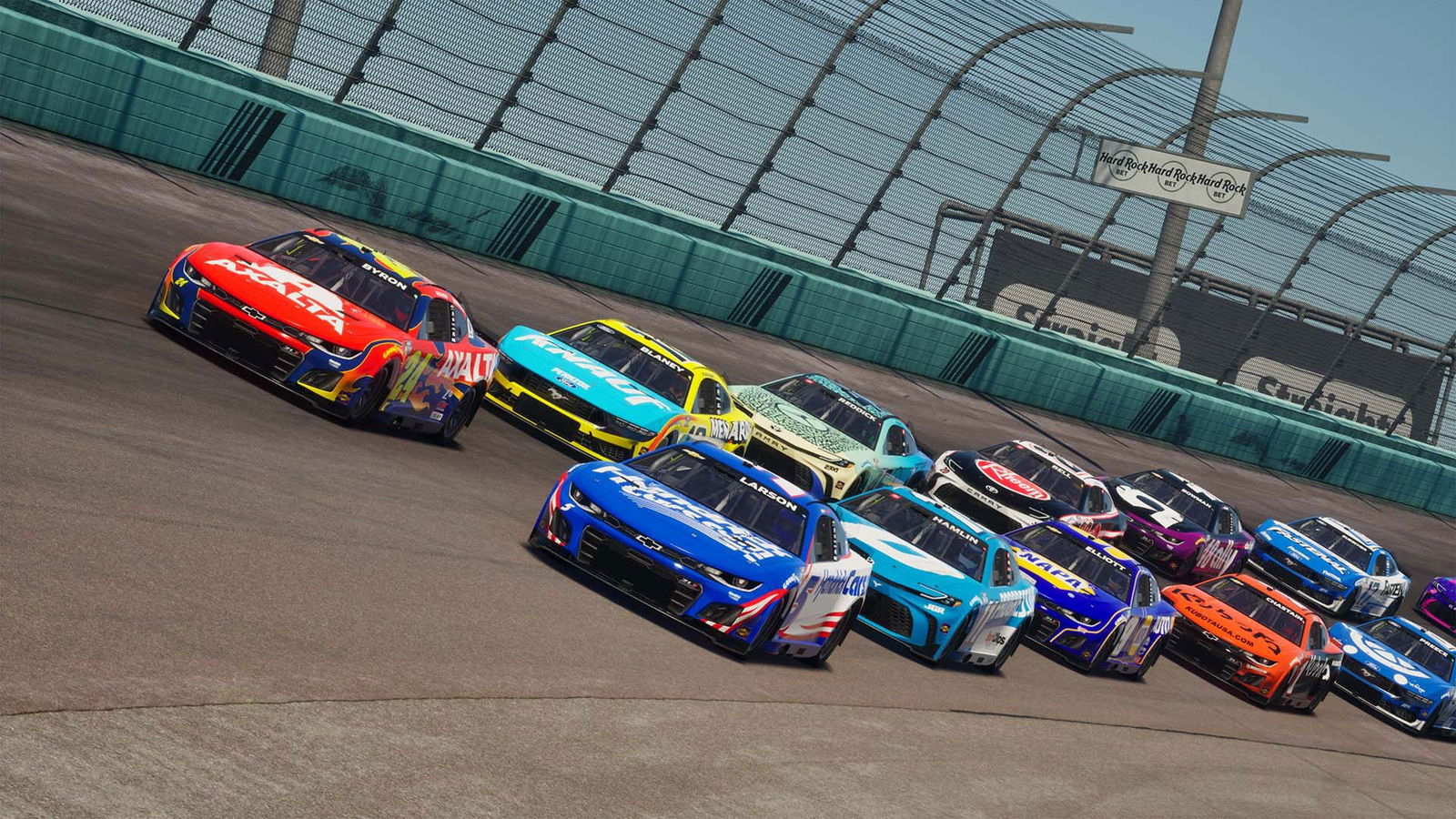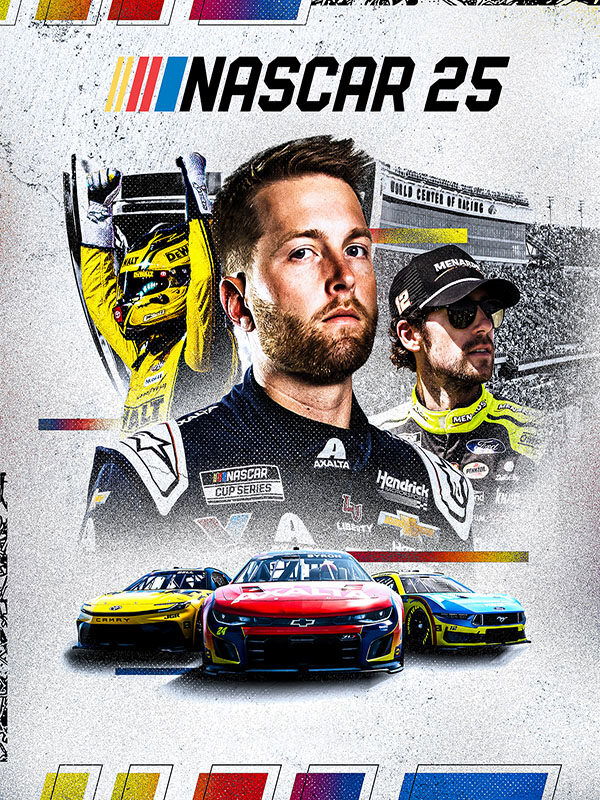When it comes to sim-racing, I tend to prefer games with a lot of variety in the tracks and cars available. Games like Gran Turismo 7 and Assetto Corsa EVO offer a ton of cars and track layouts for the player to enjoy. With the release of NASCAR 25, I wondered if the opposite could still be true for fun and excitement.
On its face, NASCAR 25 has a good racing background, being developed by iRacing Studios (arguably the most popular racing sim available today), and what it has that iRacing doesn’t is a dedicated career mode. That’s where most of my time with the game was spent, and my feelings are mixed.
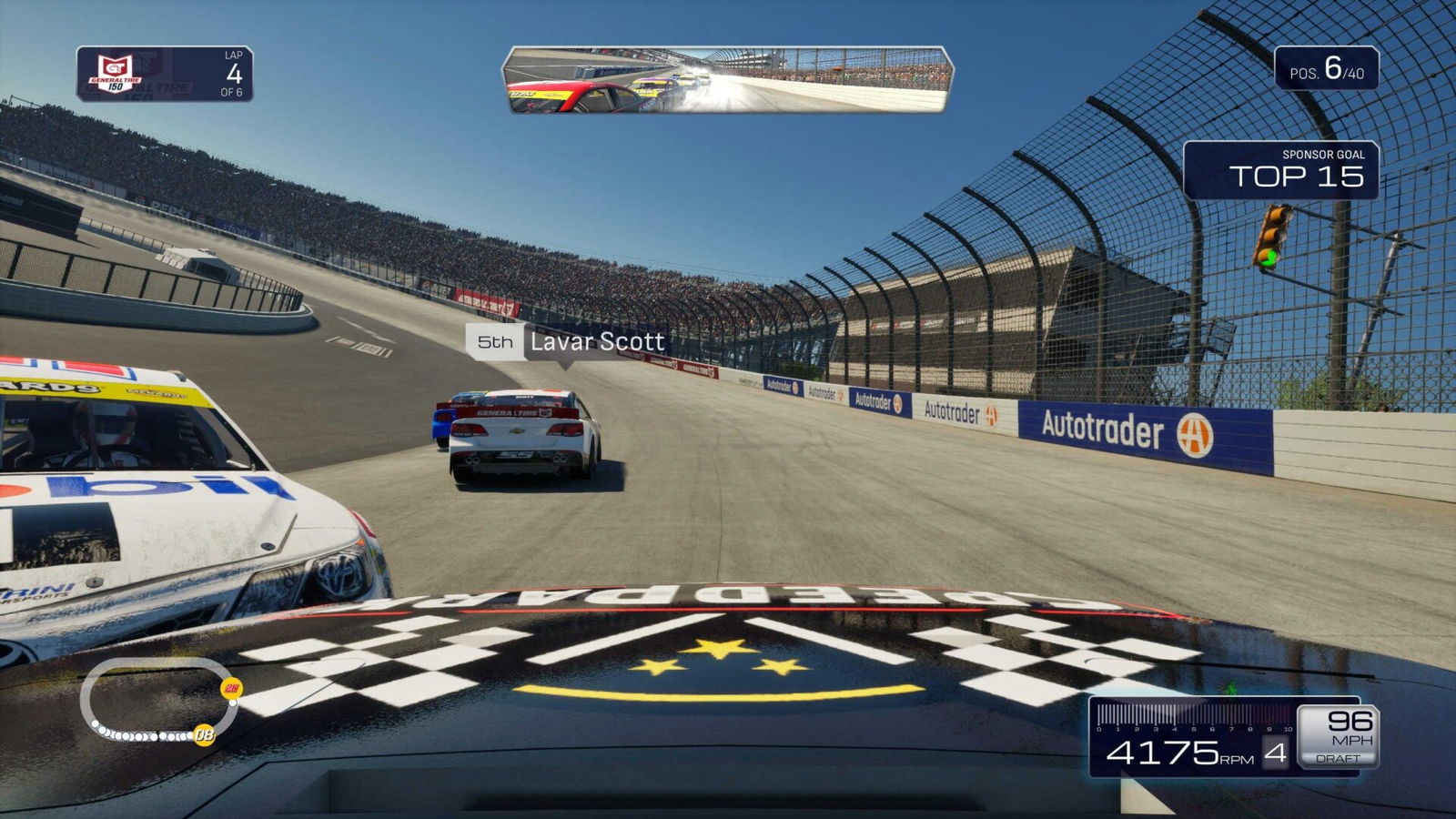
While a career mode in most games lets you create a character, give them a name, a face and style them to your liking, NASCAR 25 offers the bare minimum. You can give your character a name and choose between male or female. A blank silhouette is used as your portrait, and that’s it. You can customize your car and your driver’s fire suit, but that’s as far as it goes.
During your career, you start in the lowest available division, the ARCA Menards Series, and work your way up through the Craftsman Truck Series and the Xfinity Series before finally reaching the NASCAR Cup Series. I’ll be honest: I wanted much more than what was offered. There’s no sense of connection to the team or the driver. It really comes down to “go to this track, race, repair your vehicle afterwards, hire a new staff member or upgrade the car parts, go to the next track” and repeat the process.
At no point is there a storyline, a rivalry between drivers or any meaningful interaction. NASCAR 25 features more than 150 officially licensed drivers, yet you interact with exactly none of them. After each race, there’s a brief social media roundup where other drivers may offer praise, criticism or both, depending on your performance, but the screen appears for barely 10 seconds if you read all the posts.
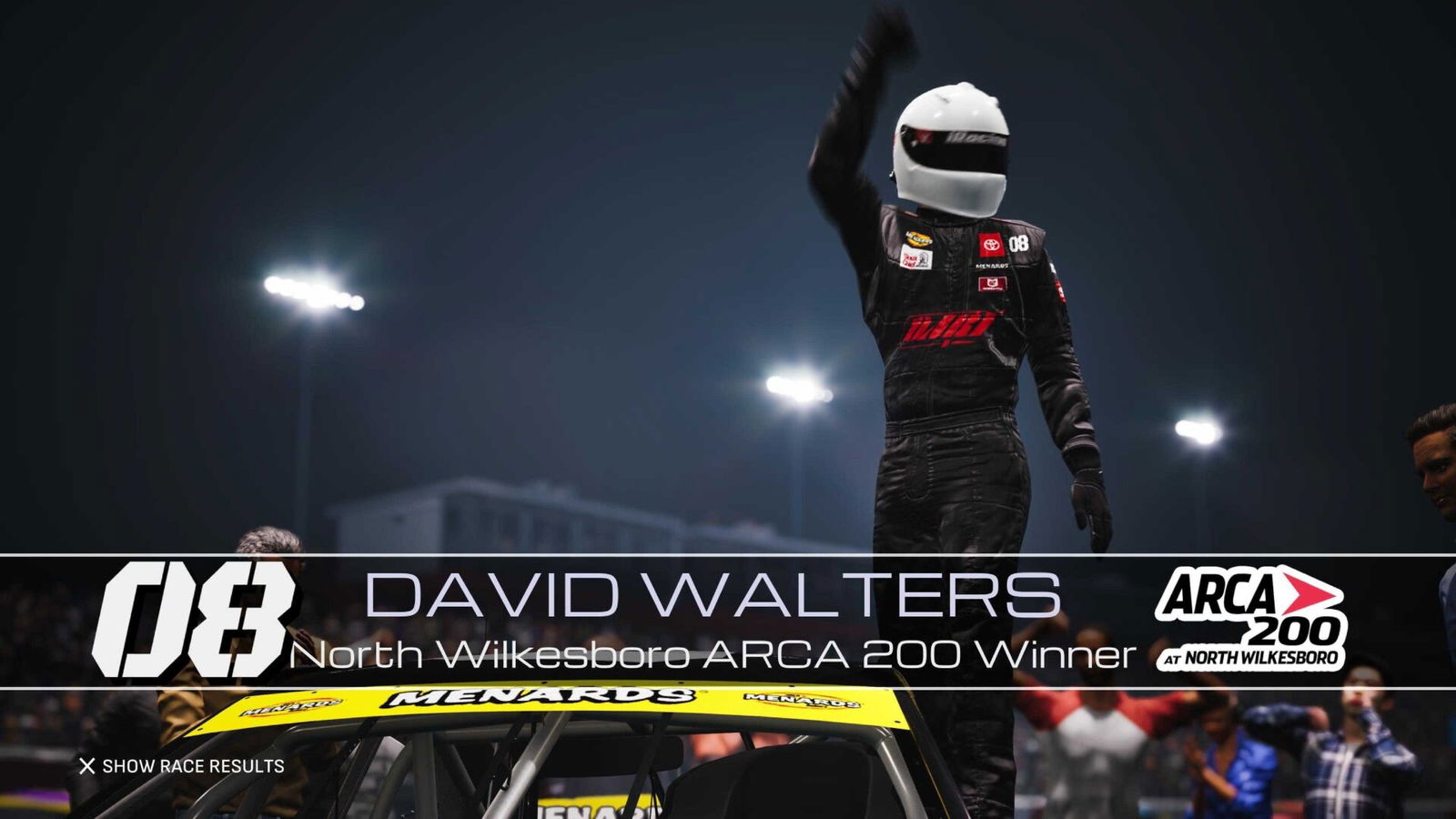
Championship mode offers users the choice of running any of the four previously mentioned series with one of up to 7 different season layouts, ranging from short, quarter, half, full, and more. Drivers race against the AI and can adjust their difficulty level to suit their needs. This mode is perfect if you’re looking for a fun championship where you don’t have to worry about upgrading anything. It’s just race until you don’t want to anymore.
The online mode is where the vast majority of people will likely spend their time in NASCAR 25, and it makes sense. Racing against the AI is fun for a while, but racing against other humans, for better or worse, is far more tactical. I dipped my toes into the online section for a few hours over the last few days, and my experience was about what I expected, having done oval races online in GT7.
In Online mode, you can create either an event or a custom lobby. Event lobbies set the track, race length and car series, while custom lobbies reflect exactly what the host wants. You can adjust the race length, track, damage level, AI cars, yellow flags and whether the lobby is public or private.
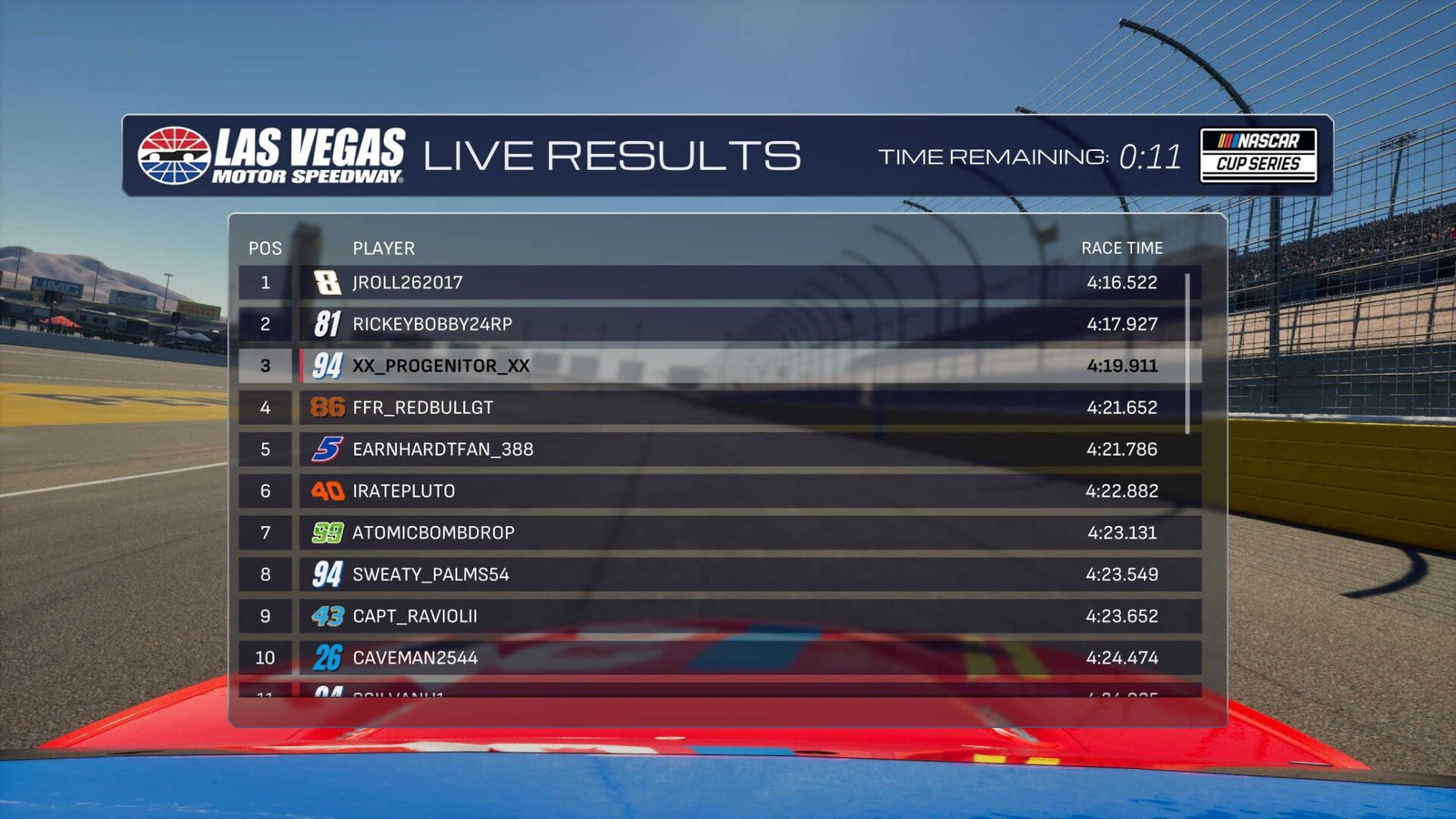
In my experience with Event lobbies, usually around turn 2 is where the race descended into absolute carnage. I genuinely thought some people were allergic to driving in a straight line, and would push other drivers, pit manoeuvre them, and otherwise crash into them, even to their own detriment, as vehicle damage was on. There were a few races where I was getting crashed into so much that my car couldn’t turn left anymore, and on an oval track, that’s all you do.
When it comes to the actual driving, NASCAR 25 is a bit of a mixed bag. Drivers using a wheel and pedals, like I was, will immediately notice the lack of force feedback coming to the wheel. The only thing I noticed regarding force feedback was the wheel becoming stiff to turn at higher speeds in corners. At no point was there any indication that the car was losing traction, going over a rough patch of pavement, or even being pushed or collided with didn’t register on the wheel.
“What NASCAR 25 gets absolutely right is its visuals. Each track looks amazing in both daytime and nighttime races.”
For a racing game developed by a studio with such a good feedback model in their other game (iRacing), it baffles me how they can’t include it even at the most basic introductory manner.
In addition, regardless of what game mode I was playing, I found that the cars tended to understeer horribly. After making it through 80% of a given turn, I found that every car I drove would understeer to the point of me having to lift off the throttle to not collide with the wall. I realise that not every track can be like Talladega or Daytona where it’s flat out the entire time, but I should be able to not experience understeer, especially on the road courses like Watkins Glen and Circuit of the Americas. The cars felt stiff and unresponsive to braking and turning.
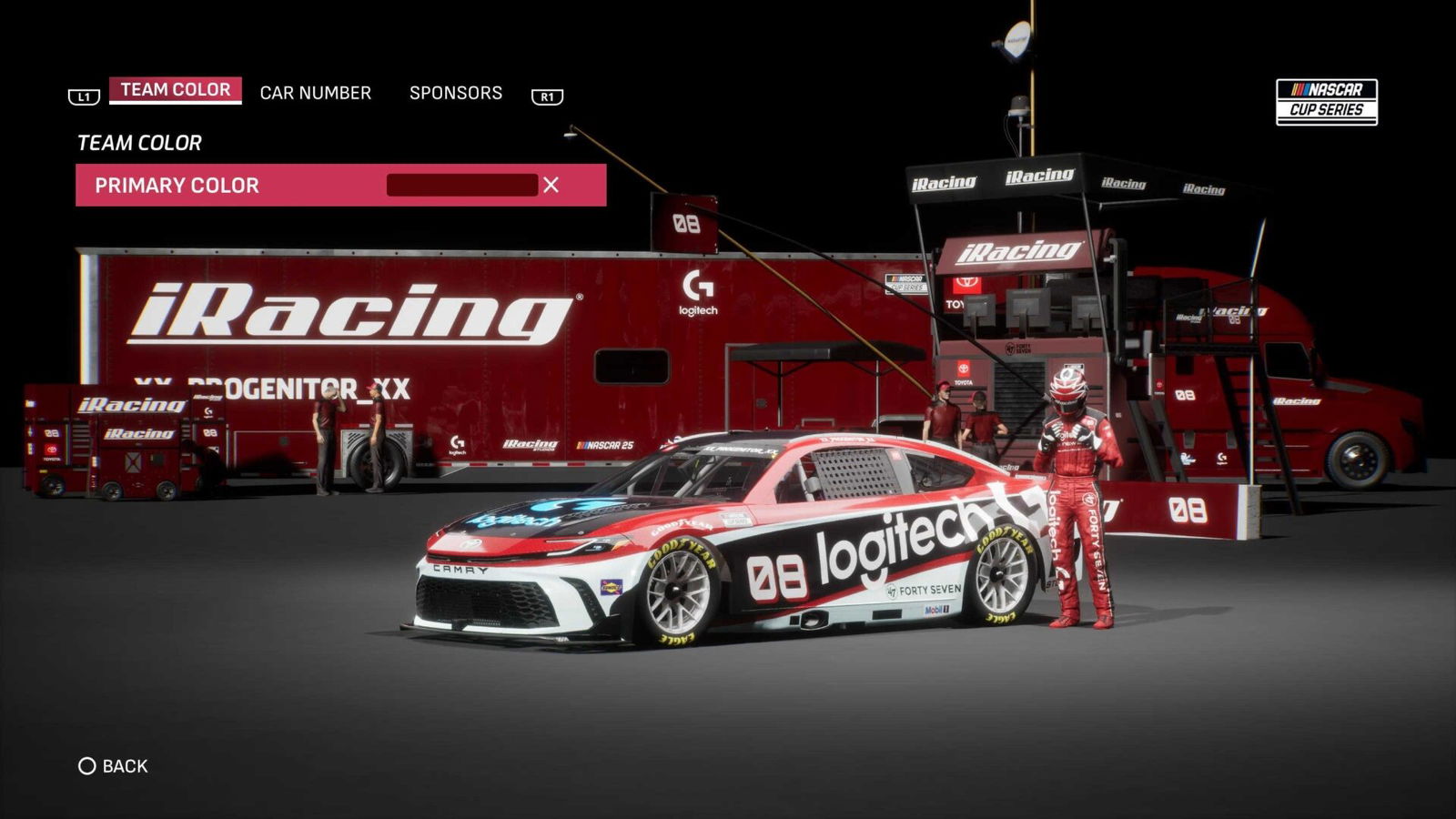
What NASCAR 25 gets absolutely right is its visuals. Each track looks amazing in both daytime and nighttime races. Each track feels like the real thing, and helps the immersion, especially if you prefer to drive using the cockpit view.
I mentioned earlier that you can customize your car, and I’ll go into more detail now. NASCAR 25 features its own livery editor, and each car and driver suit can have up to four different styles. In the editor, you can choose from 24 base designs, then adjust the paint colours and decals on the car. Each decal comes pre-loaded from a list of manufacturers and shapes. While this offers a fair range of customization, there’s no option to upload your own decals into the game library.
At its core, NASCAR 25 is less of a simulation and more of an arcade-style racing game. Fans of NASCAR will enjoy being able to play as their favourite driver from any of the four major series and race on more than 25 tracks. I can still tentatively recommend NASCAR 25—it’s a fun arcade racer with impressive visuals and an easy-to-use online experience.
